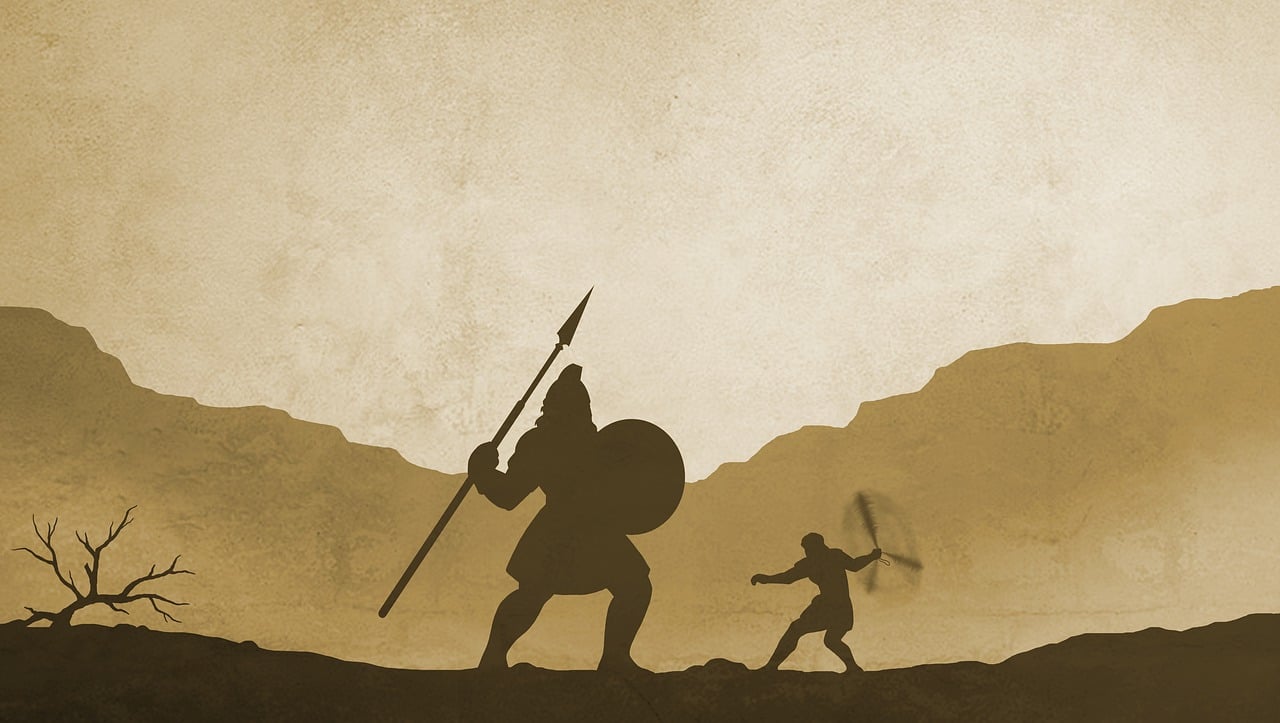Do you struggle to stand out from your competitors? Does your brand fail to get the recognition that larger, more established contenders have? A challenger positioning strategy can help you overcome these obstacles. The challenger brand concept was defined by Adam Morgan in his 1999 book, Eating the Big Fish, and it’s remained popular and evolved over the years.
A challenger brand is not the leading brand, but it’s also not part of a niche. It takes on the leading brand with confidence despite having fewer resources, proving it has a unique and superior offering.
There are different types of challengers, for example, some stand out by disrupting the status quo, others by having a strong mission, or by newer, superior technology. Challenger positioning strategies vary depending on the brand’s personality and message. You can read more about seven challenger positioning strategies that work well for B2B brands here. All have certain qualities in common – a bold message that takes on the leading brand or the status quo, persuasive ideas, and resonance with audiences.
We’ve collected five examples of leading B2B challenger brands that embody these qualities. Read on to learn about their strategies and gain inspiration for your next rebrand.
#1 | Reflaunt – Driven by Purpose
One way for a challenger brand to stand out is by focusing its message on a cause or mission. The fashion industry has a notorious impact on the environment, producing 10% of the world’s carbon emissions every year. Luxury brands recognize this image problem, but want to address it without hurting their bottom line. B2B fashion resale software platform Reflaunt offered an innovative solution with its campaign for circular fashion.
Reflaunt built its brand on the idea of “positive consumption.” Unlike other resellers who market to consumers with no benefit to the original manufacturers, Reflaunt partners directly with luxury fashion brands, connecting them with consumers who want to sell back their products, then further partnering with 3rd-party resellers, so everyone involved benefits. Major fashion labels like Balenciaga jumped on the opportunity for a partnership to showcase sustainability efforts.
Reflaunt’s mission-driven brand took off, receiving $2.7 million in funding and acclaim from fashion industry leaders and consumers alike. The company’s appeal begins in its strong environmental vision; it’s taking on a problem in the industry rather than taking on other brands. Uniting buyers around a shared ideal vision while other brands are only looking at tangible values sets a company apart as having a higher standard.
#2 | Salesforce – Taking on the Category Leader
The disruptor, facing the category leader head-on and overturning the established norms, is perhaps the most classic example of a challenger. While Salesforce is now considered a market leader itself, it was only a small player when it started out, taking on the giants of software. In 2000, it launched a risky plan of attack, using a tone most B2B companies wouldn’t dare to with its “end of software” campaign.
The CRM market leader at the time was Siebel, a traditional software provider. At Siebel’s annual conference, Salesforce hired actors to stage an End of Software protest. With the public visibility of the conference, the protest gave Salesforce a major press boost, capturing the attention of the Wall Street Journal. Riding on this fame, Salesforce also held an End of Software party, featuring games like “Throw the Disk in the Toilet” and entertainment by popular bands.
Salesforce’s unconventional moves paid off, making it the first-ever successful SaaS solution and soaring past the competition. It experienced record growth and inspired countless other companies to follow in its footsteps. Not every disruptor makes as bold a statement as Salesforce. But if you’re up against large competitors and a seemingly immovable status quo, creativity and risk-taking may be just what your business needs.
#3 | Volvo Trucks – Dramatically Demonstrating the Possibilities
B2B brands often focus on features and functionality, and it’s easy for long-established brands to become complacent with the same old messages. But when launching a new product to a diverse audience, it’s time to get creative to maximize your reach and beat the competition. Volvo was launching a new line of commercial trucks, and while their audience was B2B, it included everyone from small business owners to massive corporations. Rather than appealing to them as buyers looking for specifications, Volvo took a more human approach with a dramatic video series that took the world by storm.
With the “Live Tests” series, Volvo dramatically showed the power and stability of its vehicles. The “tests” included maintaining speed to keep a paraglider in flight, demonstrating dynamic steering by letting a hamster on a wheel drive, and the most viral – Jean Claude van Damme’s Epic Split! The Epic Split video alone garnered over 72 million views on YouTube in less than a year. And the media coverage the video received boosted Volvo’s reach even further.
In an industry that tended to be conservative in terms of advertising, using the same channels and messages, Volvo’s tactics were unique. It reaped the benefits of this campaign and became known for making trucking cool again. Audiences don’t always want to hear the same formal messaging even if they’re in a traditional industry. Showing, not telling, and appealing to the emotions may be just what your buyers need to shake them out of their comfort zone.
#4 | Avontus – Rising Above the Status Quo
Finding innovative ways to break buyers out of their status quo and fighting against traditional ways are characteristic challenger moves. In an industry still relying on manual methods like pen and paper, scaffolding software provider Avontus needed to engage with buyers who weren’t even looking for a solution. These scaffold professionals weren’t interested in making a software purchase, but they did follow what their peers in the industry were doing. Avontus leveraged its existing customer base with its #BeatMyScaffold campaign, a social media contest for customers to showcase their scaffold designs made using Avontus Designer.
Scaffold designers take great pride in their work, so they leaped on the opportunity to share their creative designs and encourage their peers to vote for the best one. The contest exponentially increased Avontus’s reach and engagement, raising awareness among new audiences. The contest entries also helped Avontus develop a library of user-generated content, which it continues to use for social proof. Avontus took an unconventional approach for B2B with its social media contest, and that helped it stand out. Generating excitement and using industry peers for social proof can give your brand the edge it needs.
#5 | Mailchimp – Bringing a Personal Touch to B2B
Another way for challenger brands to make their mark is simply by having a greater resonance with their audience. Many B2B brands focus only on appealing to the rational minds of their prospects, forgetting that there’s also an emotional aspect to B2B purchases. Mailchimp brings a human tone to its marketing, showing that it’s a brand that cares about the challenges its audiences are facing and truly cares about their success.
Mailchimp’s challenger strategy took on the corporate, impersonal feel of big brands by using an informal tone and showing examples of what it does for customers. For example, it poked fun at itself when people were mispronouncing the name as “MailKimp” by launching a campaign with other silly mispronunciations of it.
On a more serious level, it produced videos featuring small businesses that showed the impact they were making on communities, even winning a BAFTA award for its touching story, 73 Cows. Nearly any business will benefit from showing genuine care for customers, a quality that’s becoming rare, especially in B2B.
Ready to Make Your Brand a Challenger?
Have these B2B challenger brands inspired you? A change in positioning can turn a brand that’s trailing the pack into a leader. Figure out what you’re challenging, whether another brand or an established idea, and determine which strategy works best for your brand.
Find out what kind of challenger brand you are here!
And if you’re ready for a rebrand to position your brand as a challenger, contact us for a free consultation.



